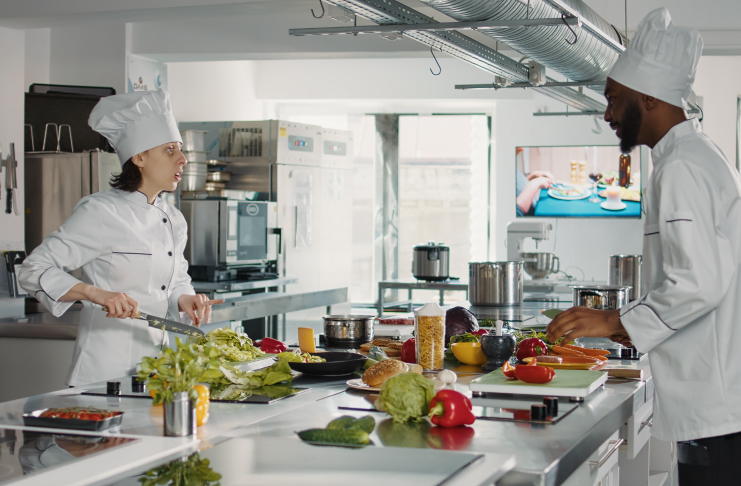Adopting a cloud kitchen approach has one main financial benefit: the greatly lower running expenses than in conventional eateries. Cloud kitchens replace the need for costly eating areas, interior design, and front-of-house employees. Food entrepreneurs may concentrate their budget on quality ingredients, culinary tools, and effective delivery systems free from these extra costs. Businesses running a cloud kitchen can lower their overhead costs by simplifying processes while nevertheless preserving a high degree of food preparation quality.
Minimal Real Estate Investment
Many times, traditional restaurants need attractive sites to draw foot traffic, which drives up rents. But cloud kitchens don’t rely on heavy traffic areas or physical visibility. Rather, they run in reasonably priced locations, such as communal kitchens or industrial areas, greatly lowering real estate costs. This adaptability lets companies free more money to scale their operations or grow their distribution system free from the weight of outrageous rent.
Scalability Without Major Investments
Designed for scalability, cloud kitchens help companies grow without needing large-scale capital. Expanding a traditional restaurant sometimes requires large outlays in infrastructure, licenses, and staffing. By launching several virtual restaurant brands from a single culinary facility, a cloud kitchen can target various client categories with little further expenses. This capacity to vary offers and keep a single operational center is a good approach to increasing income sources without overloading the budget.
Efficient Resource Utilization
Running a cloud kitchen lets companies make best use of resources. Entrepreneurs who combine activities into one kitchen can cut labor expenses, energy use, and food waste. Commonly employed in the cloud kitchen concept, shared kitchens help to further improve cost effectiveness by distributing maintenance and utilities charges across several companies. Furthermore, sophisticated inventory control systems and data analytics guarantee efficient use of resources, reducing waste and optimizing profitability.
Increased Profit Margins
Higher profit margins for companies follow the lower expenses connected with the cloud kitchen concept. Operators free from the expense of running a dine-in restaurant can devote resources on marketing, improving food quality, and strengthening delivery systems. The freedom to run several brands also enables business owners to explore new menu ideas without major financial risk, thereby increasing their profitability.
Adaptability in a Growing Market
Food delivery services’ growing popularity makes the cloud kitchen model quite flexible to meet market needs. Businesses can profit from the growing customer taste for convenience by concentrating just on delivery. This flexibility guarantees a consistent income flow even in times of economic crisis or unanticipated difficulties, including limitations on dining-in operations.
Chances for Partnership and Collaboration
Cloud kitchens often offer chances for alliances with food delivery companies and other enterprises. These joint ventures might lower marketing costs, enhance order fulfillment, and draw a larger clientele. For instance, working with a delivery app can enable companies to attract more clients without significantly spending in their own delivery system, therefore improving cost effectiveness.
From lowered overhead expenses to more scalability and profitability, using a cloud kitchen model has major financial advantages. Food entrepreneurs can create a profitable and sustainable company in the very competitive market today by using the adaptability and efficiency of this approach.


